
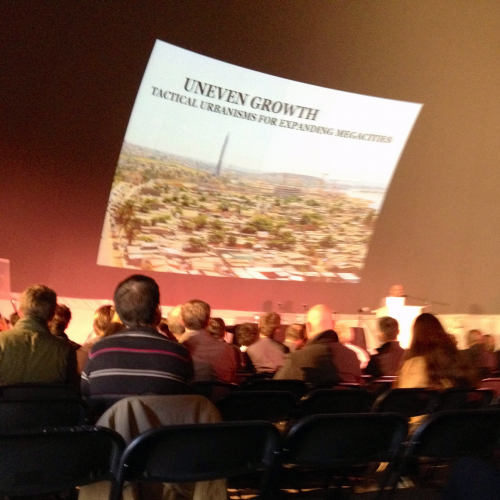
German car companies are thinking about the cities of the future. Audi has its Urban Initiative, BMW has a multi-year city future project in cooperation with the Guggenheim, now gathered together in a show at the Guggenheim in New York. Volkswagen’s effort to look at future cities is a multi year partnership with the Museum of Modern Art and its junior branch in Queens, PS One, where the company has built the VW Dome, an inflatable hemisphere that looks like some Cold War era radar station. The efforts began in the aftermath of storm Sandy about a year ago. Inside the dome ( photo above ) on Saturday were the latest elements of the effort: presentations by architects and planners addressing an urban future where 75 per cent of the world’s population will live in cities and most will be poor. [ audi ][ bmw / guggenheim ] [ vw / moma / ps1 ]
 about phil patton
about phil patton

Gutai members sought to break free from the rigid mindset of wartime Japan by radically expanding our understanding of what art was and who could make it, encouraging viewers to participate in artistic creation. In the spirit of Gutai, Please Draw Freely, an interactive page on the museum’s web site, invites you to create art with people from around the world. To begin, choose to start a new drawing or to add to an existing one. Each week, we are choosing a theme to inspire you as you collaborate with Gutai artists Takesada Matsutani, Norio Imai, and Sadaharu Horio. Last week, drawers Savia-mahajan, mgsmtg, and Sholto created these drawings for the theme “Gutai-inspired.” [ This week, the theme is “the Guggenheim building.” ] Make a drawing using that theme for your chance to be featured Friday
 savia.mahajan
savia.mahajan
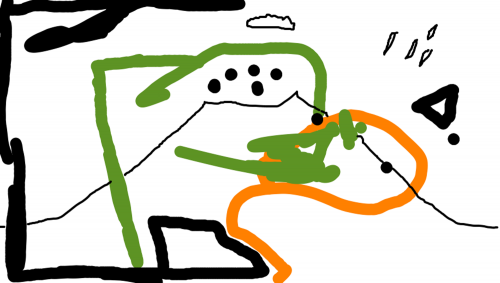
by mochi
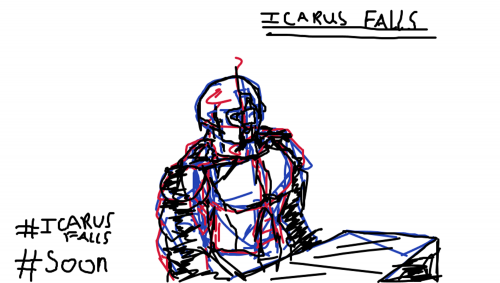
by ketchupbeard
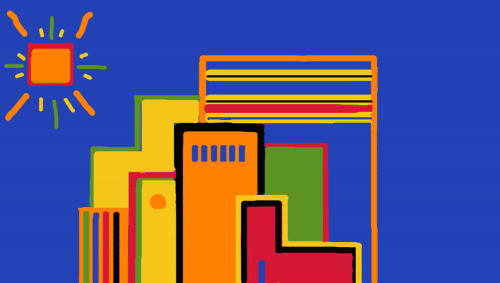
by vincenzo
[ guggenheim ]
 click > enlarge
click > enlarge
If you’ve visited the Guggenheim lately you may have seen Earth Blocks – no, not the ones used to build houses (though those are really cool, too). I’m talking about the kid’s version, Earth Toy Earth Blocks, which are like sustainable Legos. Made from a composite of cedar tree bark, compressed saw dust, coffee beans and green tea leaves, the blocks don’t come in shades of red, blue or yellow. In fact, you’d better hope your kid likes dark green and brown a lot.
They’re a lot softer than Legos, which means it won’t hurt as much when you accidentally step on one, but The Wall Street Journal points out that since they’re softer and don’t snap together as tightly as Legos, they’re “less than ideal for making lightsabers.” And since the blocks do actually smell like coffee and tea, they’re probably better suited for the big kids out there. I can’t be the only who never outgrew her Legos, right?
You buy them from the Guggenheim online, $30 for 50 blocks.



about perrin drumm
 click > enlarge
click > enlarge
Maurizio Cattelan’s dizzying Guggenheim retrospective may have ended, but people are still talking about it. What I’d like to know? How did they do it? This isn’t baby’s first mobile we’re talking about. This is whole skeletons, human figures and a host of taxidermied animals. To pull it off, the Guggenheim’s in-house installation team consulted with structural engineers who made mockups and 3D models and ran several tests before going to work with Cattelan’s pieces (bummer alert: they weren’t the real things but “representations of his work”).
To make sure the 11-ton exhibit wouldn’t cave the roof in, structural engineering firm Gilsanz Murray Steficek rigged up 12 cables that connected the columns to the roof’s center with a ring truss. The individual cables used to hang each piece were then attached to the central truss. After that, a load monitoring system was installed to prevent adding too much weight in one particular area. The entire operation relied on a synchronized motor system that could raise or lower the entire installation, even redistribute the weight around should it get too heavy in one area.
Before the exhibition was mounted on the main floor it was staged in a 1/12th scale model, the timing and position of each piece of Cattelan’s work perfected until the installation could be raised in its entirety without any cables interfering or uneven weight distribution. Watch the installation video. [ more images of installation ]

about perrin drumm

Standing beneath a haphazard mass of art on the ground floor of Frank Lloyd Wright-design rotunda. This unorthodox “hanging” of art may be the perfect solution for the uniquely designed New York Guggenheim. Visitors view every work as they ascend the ramp to the ceiling.

There are 22 taxidermied animals, two of which are horses, five donkeys, one cow, one elephant, numerous mice, a dozen or more pigeons, and quite a few skeletons.

Worried about whether the Guggenheim roof could support the body of work the entire installation was first constructed offsite for testing.

Maurizio Cattelan (September 21, 1960, Padova, Italy) is an Italian artist based in New York. He’s known for his satirical sculptures, particularly La Nona Ora (The Ninth Hour), depicting Pope John Paul II struck down by a meteorite. He has co-found the magazine Toilet Paper and founded the “Wrong Gallery” in 2002, a New York Storefront and its subsequent display within the collection of the Tate Modern from 2005 to 2007. He has been described by Jonathan P. Binstock, curator of contemporary art at the Corcoran Gallery of Art “as one of the great post-Duchampian artists and a smartass, too”.

The photo gallery below is ordered from ground level to the top of the rotunda.
[ guggenheim ] [ maurizio cattelan ]
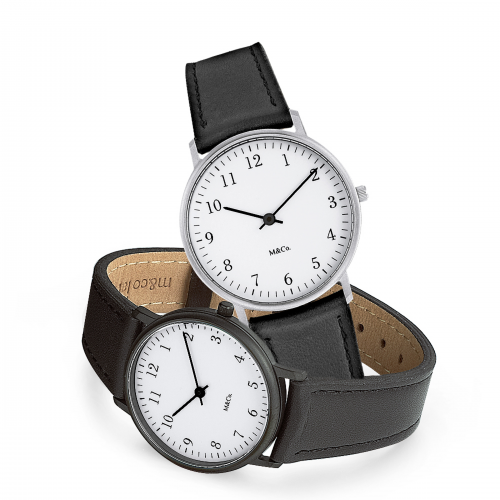 bodoni | tibor kalman
bodoni | tibor kalman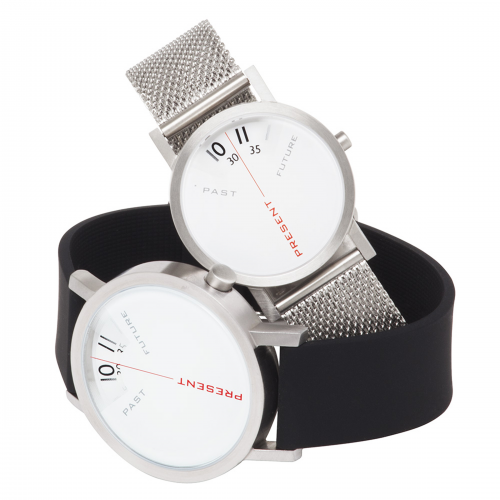 past present & future | daniel will-harris
past present & future | daniel will-harris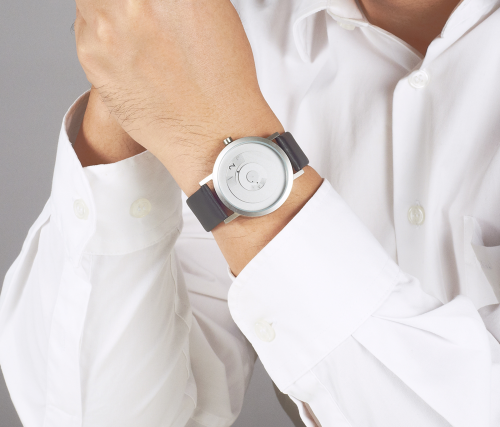 reveal | daniel will-harris
reveal | daniel will-harris reveal | daniel will-harris
reveal | daniel will-harris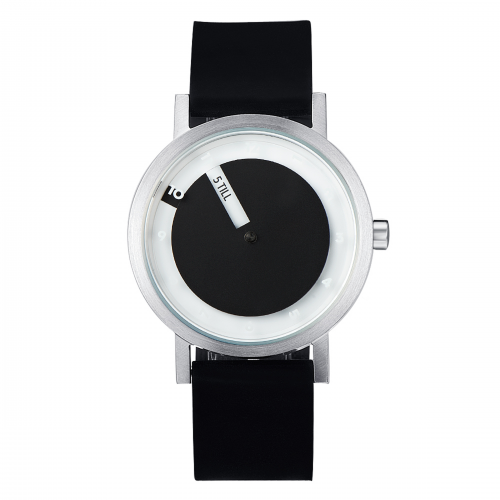 till | daniel will-harris
till | daniel will-harris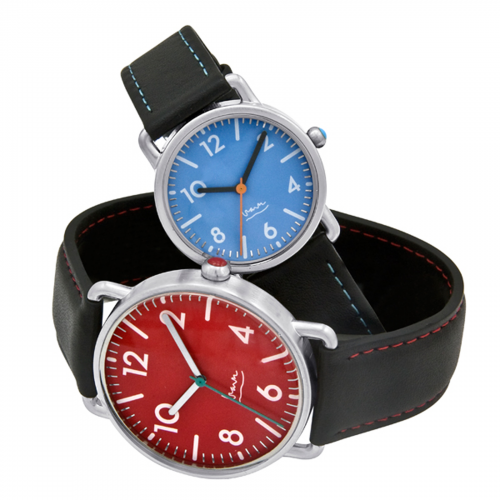 witherspoon | michael graves
witherspoon | michael graves



















